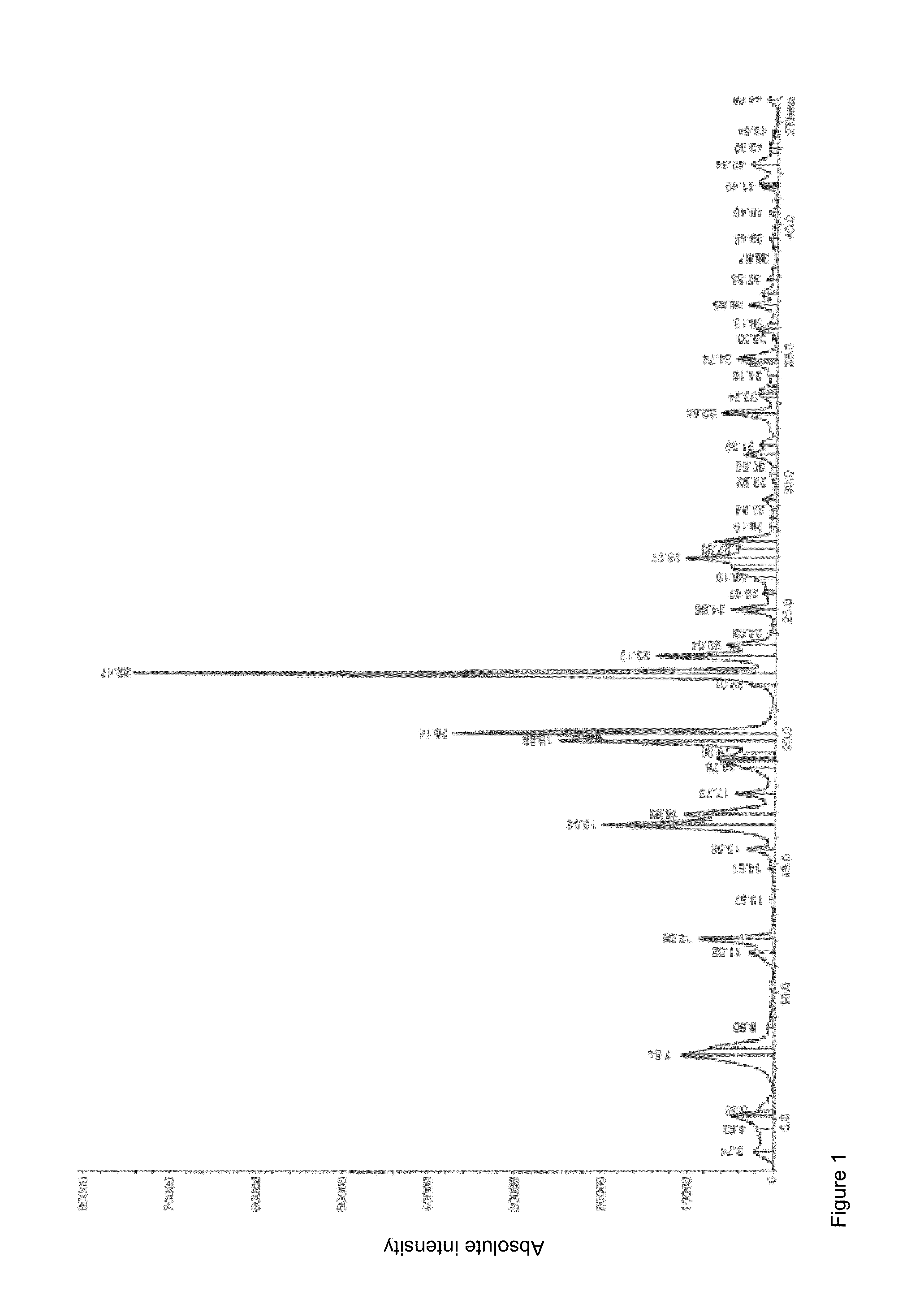Crystallization of idarubicin hydrochloride
a technology of idarubicin and hydrochloride, which is applied in the field of crystallization of idarubicin hydrochloride, can solve the problems of poor solubility, inability to manufacture, and difficulty in processing, and achieves the effect of high stability
- Summary
- Abstract
- Description
- Claims
- Application Information
AI Technical Summary
Benefits of technology
Problems solved by technology
Method used
Image
Examples
example 1
[0090]1 g idarubicin hydrochloride was dissolved in a mixture of 8 ml water and 92 ml 1-butanol. Here, the mixture was heated to 80° C., in order to completely dissolve the solids. 20 ml of this mixture was slowly removed by distillation in a vacuum, in order to reduce the water content to less than 4.0 volume percent, relative to the total volume of the mixture. A suspension was thereby formed, which was cooled to 20° C. within 6 hours. The suspension was stirred for an additional 12 hours at this temperature. The crystals contained in the suspension as solids were filtered and washed with 20 ml acetone. The crystals were then dried for 12 hours under vacuum. A yield of idarubicin hydrochloride of 92% resulted.
example 2
[0091]1 g idarubicin free base was introduced into 100 ml of a mixture of 80 ml chloroform and 20 ml methanol. The pH value of this mixture was then set to a value in the range of 3.5-4.0 by adding 0.1 M isopropanolic HCl solution. This mixture was mixed with 100 ml 1-butanol 10 ml water. Then, the chloroform was slowly removed from the mixture by distillation at 60° C. Thereafter, 20 ml of this mixture was slowly removed by distillation in a vacuum at 80° C., in order to reduce the water content to less than 4.0 volume percent, relative to the total volume of the mixture. Here, a suspension formed that was cooled to 20° C. within 6 hours. At this temperature, the suspension was stirred for an additional 12 hours. The crystals contained in the suspension as solids were filtered and washed with 20 ml acetone. The crystals were then dried for 12 hours under vacuum. A yield of idarubicin hydrochloride of 95% resulted.
example 3
[0092]A suspension was produced from 1 g amorphous idarubicin hydrochloride in 80 ml 1-butanol and 4 ml water. This suspension was heated to a temperature of 70° C. and stirred at this temperature for 4-6 hours. The suspension was then slowly cooled to 20° C. and stirred for an additional 12 hours. The crystals obtained were filtered and washed briefly with 20 ml acetone. Thereafter, the crystals were dried for 12 hours under vacuum. A yield of idarubicin hydrochloride of 95% resulted.
PUM
| Property | Measurement | Unit |
|---|---|---|
| temperature | aaaaa | aaaaa |
| pressure | aaaaa | aaaaa |
| temperature | aaaaa | aaaaa |
Abstract
Description
Claims
Application Information
 Login to View More
Login to View More - R&D Engineer
- R&D Manager
- IP Professional
- Industry Leading Data Capabilities
- Powerful AI technology
- Patent DNA Extraction
Browse by: Latest US Patents, China's latest patents, Technical Efficacy Thesaurus, Application Domain, Technology Topic, Popular Technical Reports.
© 2024 PatSnap. All rights reserved.Legal|Privacy policy|Modern Slavery Act Transparency Statement|Sitemap|About US| Contact US: help@patsnap.com










